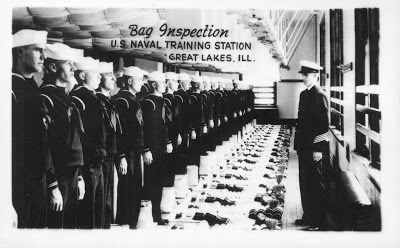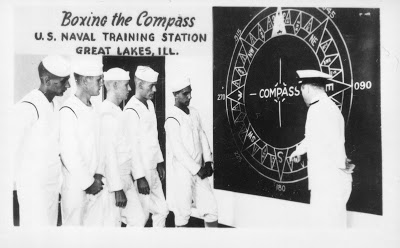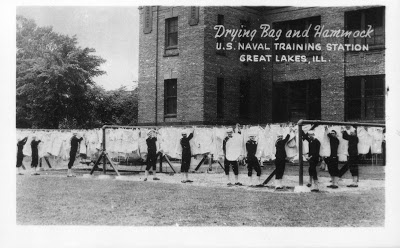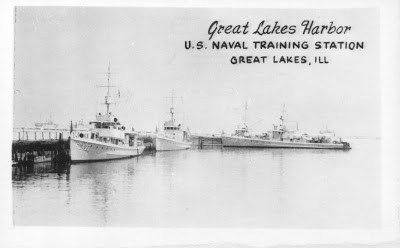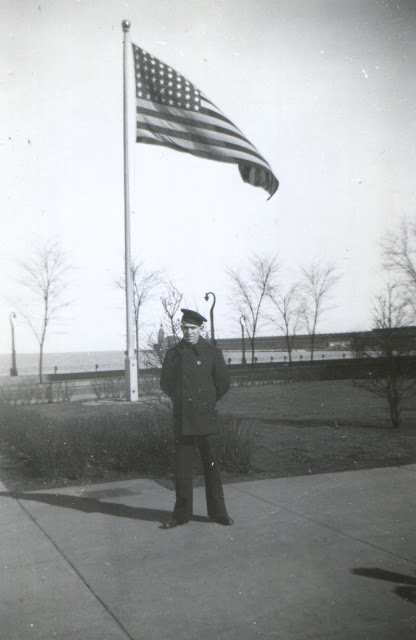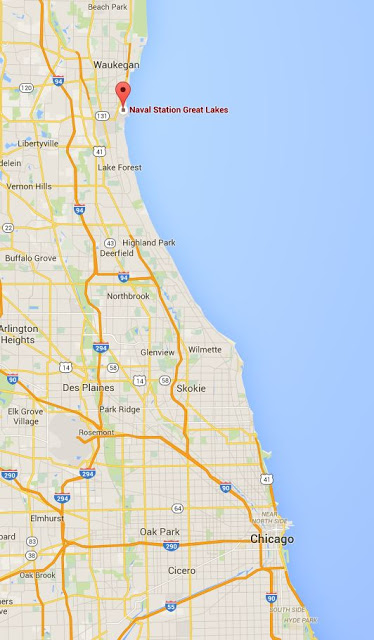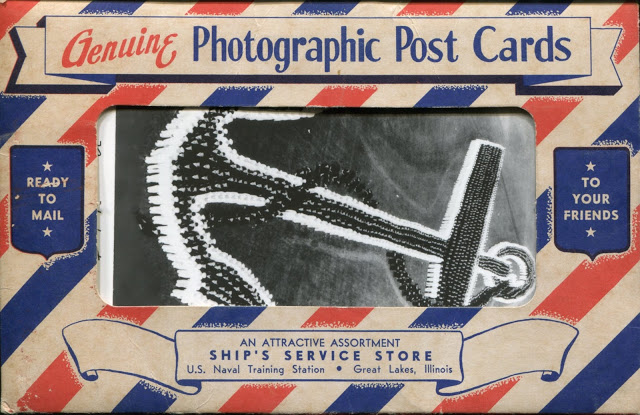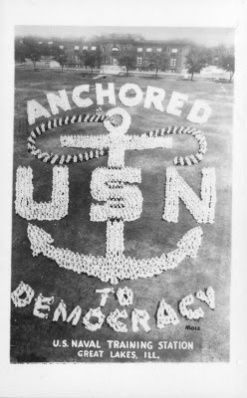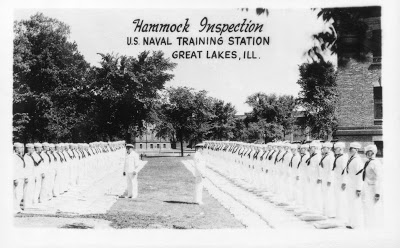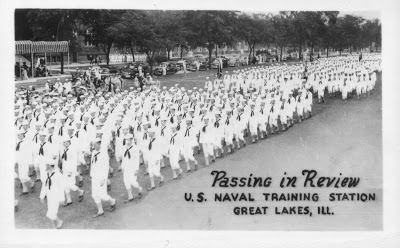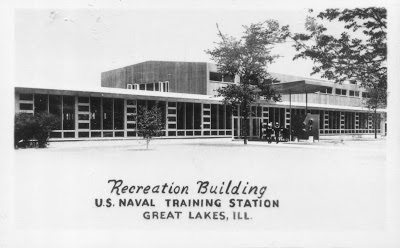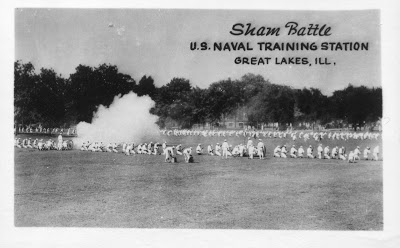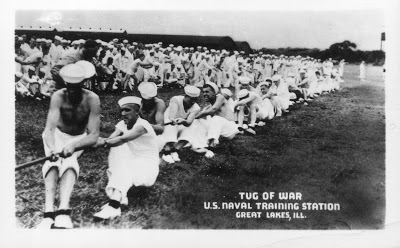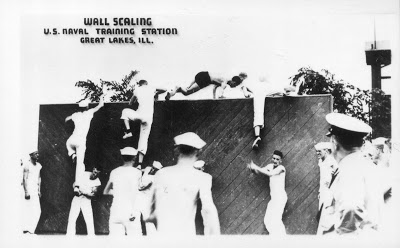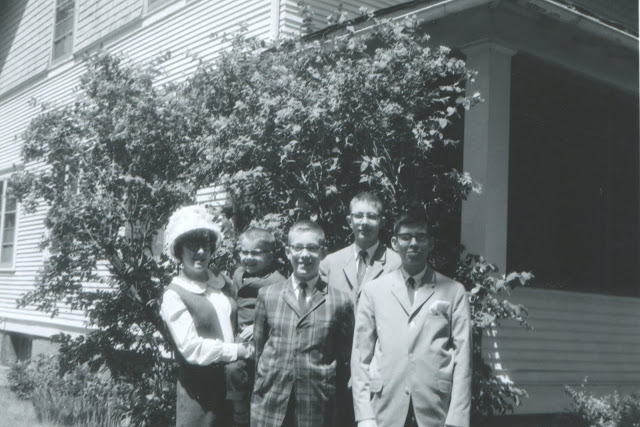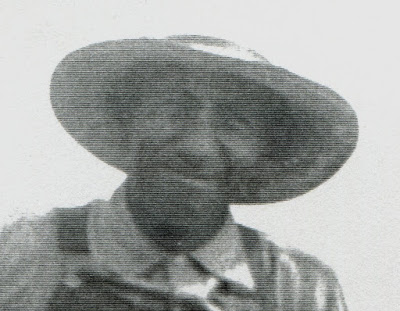Born Tjerand Torbjørnson, my grandfather came into this world in a dirt-floored cottage on the edge of a fjord near Håvik in Norway in 1873. His entire immediate family came to America from Norway in three waves between 1886-1889. They first lived in northwest Iowa, before finally settling on a farm outside of Madison, Minnesota in 1903. My grandfather, who had changed his name to Charles Torbjorn Hovick, remained in Iowa, but when a job offer came from the grain elevator in Madison, he finally joined his family in 1904.
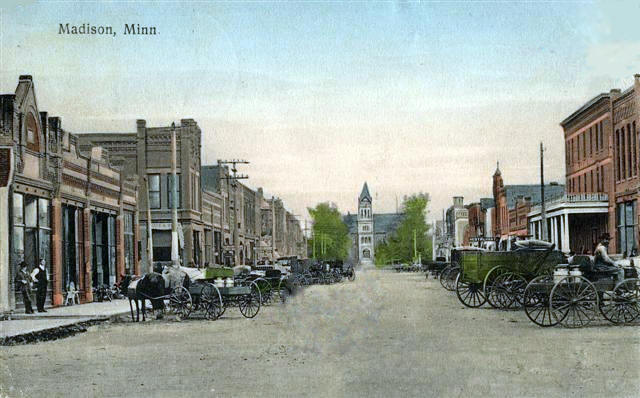 |
| Madison, Minnesota in 1909 |
He met my grandmother, Pauline Braaten, shortly after arriving, and they were married on May 18th of that same year.
 |
| The Wedding of Charles Hovick and Pauline Braaten, 1904 |
My grandfather, often called Charley, has been described to me as a gentle, loving, and funny man. He had only the equivalency of an eighth-grade education. But despite this, he understood the value of education, and would go to great lengths to insure that his three daughters received the finest education that he could provide. What makes this all the more remarkable is that Grandpa’s dedication was so counter to the prevailing attitudes of the day. My Aunt Mildred summed up those attitudes like this: “Education for girls? What a waste of good money when all they would do would be to get married. And who needs learning for keeping house and raising children?”
In 1915, an old family friend, Mr. H.E. Loe from Linn Grove, Iowa offered my grandfather a job managing a farm five miles north of Madison. So at the age of 32, he, along with his wife, Pauline Braaten Hovick, 31, and daughters Mildred, 7, and Signe, 3, left the hubbub of small town life and moved out to the farm.
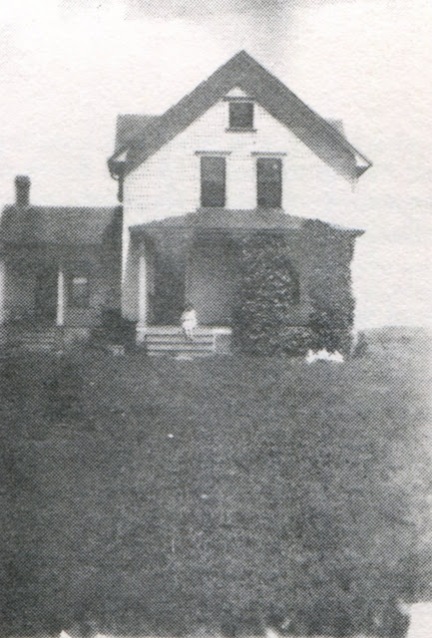 |
| The H.E. Loe Farm |
Now that they had no neighbors nearby to disturb, the girls were delighted that they could make as much noise as they pleased.
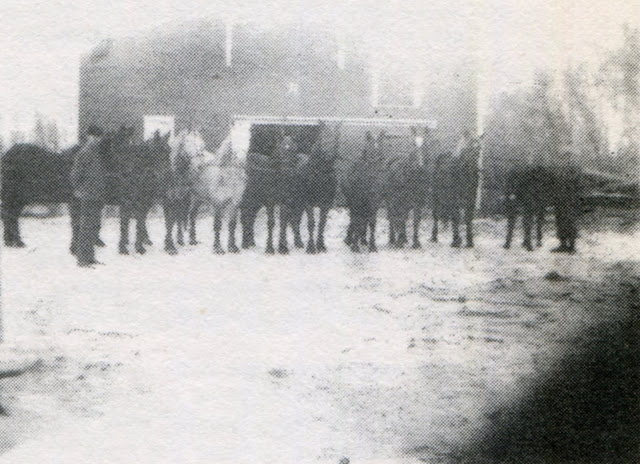 |
| The Barn at the H.E. Loe Farm |
 |
The Hovicks during the time they lived on the farm
back: Pauline, Mildred
front: Charles, Signe |
Their financial well-being was wholly dependent upon the success of each year’s crops. One year on a hot, sunny summer day, the Ladies Aid Society was meeting at the Hovick farm. The fields looked good, and they were optimistic for a good harvest. But a freak summer storm swept in, complete with driving rain and hail, and by the time the Ladies went home, the crops were devastated.
However, the fall harvest of 1925 was an exceptionally good one.
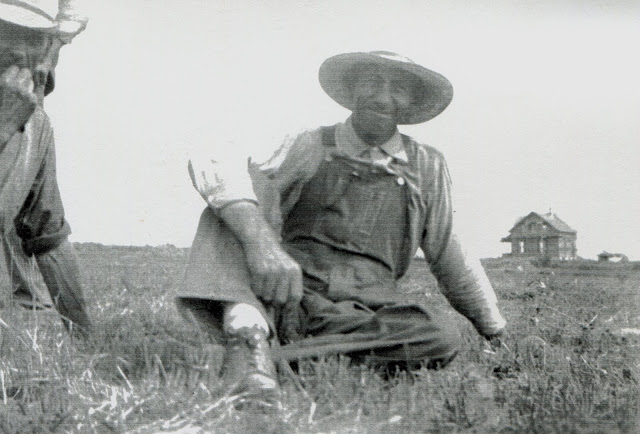 |
| Charley Hovick the Farmer |
In Remember, my Aunt Mildred’s memoirs published in 1974, she writes:
“…the crops filled the granary and barns to overflowing. Papa called out from the granary [for me] to come to him. The two of us sat on the tongue of the lumber wagon, talking over the days of harvesting just completed, so grateful for the bountiful gifts of God.”
Mildred, or Aunt Mimi as we called her, had graduated from the Lutheran Normal School the spring before, intent on becoming a teacher.
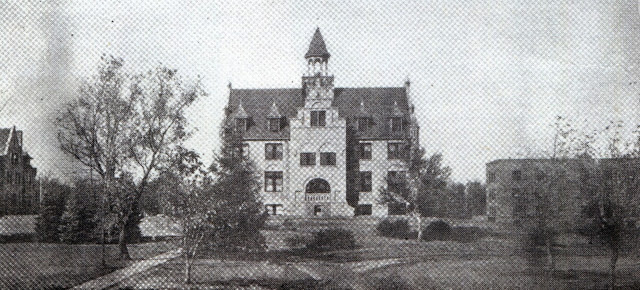 |
| Lutheran Normal School, Madison, Minnesota |
Her first choice was to attend St. Olaf College in Northfield, Minnesota, but the family simply couldn’t afford it. So plans had been put in place for her to attend Cedar Falls College in Iowa.
Sitting there in granary, Grandpa asked her if she would like to go to St. Olaf after all. “We can manage it with these crop returns.” Mildred was elated, The beginning of the school year was almost upon them, and before she knew what was happening, she was on a train for Northfield.
“In my pocket was a personal checking account with a $300.00 deposit which would see me through most of the first semester.”
Grandpa’s dream was beginning to come true.
My mother, Charlotte Pauline Hovick, was born a month later on October 9, 1925.
 |
| Charlotte Pauline Hovick |
Mildred, now a freshman at St. Olaf, excitedly came home for Charlotte’s baptism. She wrote:
“Monday and the inevitable return to college came with shocking reality. I cried. I cried for hours. Papa took my bags in one hand and with his arm about me, escorted me from the car to the waiting bus, determined as ever to see his dream for my education fulfilled. I cried all the way home to Northfield, suffering the very worst spell of homesickness I ever experienced.”
“In June 1929, dressed in the traditional black graduation robe with the tassel switched to the other side of my cap and holding my sheepskin diploma in my hand,
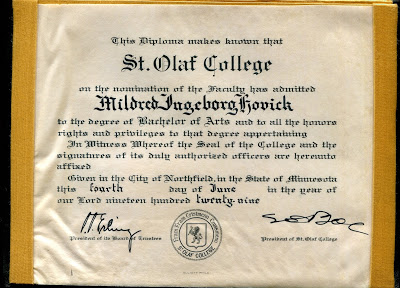 |
| Mildred Hovick’s St. Olaf College Diploma |
“I felt an arm around me. ‘Now aren’t you glad I made you get on that bus four years ago, Mim? It hurt me all these years to think of you and your tears, but I thought I knew what was best for you.’ I turned and hugged him and said, ‘Thank you, Papa. I’m so glad you did.’”
That winter, Charles and Pauline made the momentous decision to leave Madison and move the family to Northfield. The reasons were two-fold. Pauline suffered from pernicious anemia, and living and working on the farm was growing increasingly difficult for her. Secondly, this would be a major step forward in realizing their dream of giving their daughters a fine education. Living in Northfield would mean that they wouldn’t have to pay room and board, making an expensive St. Olaf education a bit more affordable.
In February of 1926, they sold much of what they had. An auction was held on February 17, 1926 to sell what appears to be everything on the farm – livestock, machinery, and household goods.
 |
Chas. T. Hovick Farm Auction Notice
Click to enlarge |
With the downsizing completed, it was time to bid farewell to their dear family and friends and move the 180 miles to Northfield. They must have owned a car by this point, because Charles drove to Northfield loaded down with their remaining belongings, and Pauline, Signe (age 13), and Charlotte (6 months) soon followed on the train. They moved into a rented house at 652 St. Olaf Avenue, which would forever be known as “Charlotte’s Baby House.”
 |
652 St. Olaf Avenue, Northfield, Minnesota
Charlotte Hovick in buggy |
Signe grew up to attend and graduate St. Olaf in 1934, and Charlotte attended St. Olaf in 1943-1944, before completing nurse’s training at Fairview Hospital School of Nursing in Minneapolis. Grandpa’s dream was fulfilled.
A few years later, as he lay dying of cancer in 1948, he told his girls, “I don’t leave you with an inheritance of money or property, but you have the best of all – an education, which has prepared you for life on your own.”

